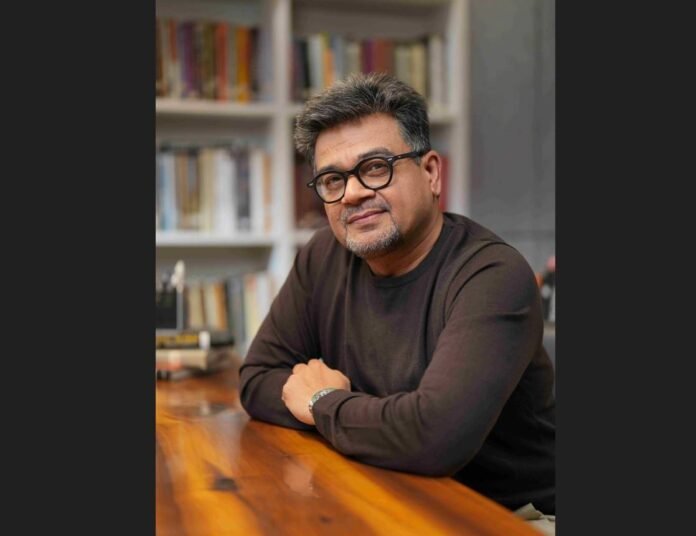The pace at which luxury hospitality is evolving today is faster than it has ever been in the past two decades, and what defines it is no longer opulence alone. It is experience—seamless, immersive, and deeply connected to place. My journey from the small town of Jammu to leading Studio B Architects has made me realize that the true essence of hospitality design is essentially dissolving boundaries: between architecture and interiors, built form and nature, tradition and technology. This unity will shape the future of luxury hospitality.
My own journey has taught me that design is never linear; it is born from resilience, curiosity, and an ability to adapt. When I went to Kerala to study architecture, I knew no Malayalam and struggled even with English. But design spoke a universal language, and that kept me grounded. Each step-from interning in Chandigarh to moving to Delhi-solidified my notion that hospitality is not about building spaces but crafting human emotion. And this notion became the pillar of my practice.
In the early years of my career, when financial stability was a distant dream, I understood the importance of choosing work in line with the long-term vision over immediate comfort. I refused to work on small or meaningless assignments. Rather, I waited for opportunities that allowed me to leave an imprint-such as Cloud Nine, the first nightclub I designed in Kolkata. It was a turning point, and yet only the beginning. When I hand drew 3D visuals across five sleepless nights for what would later become the Ramada Plaza in Varanasi, I understood the raw power of passion. That hotel wasn’t just a project; it was proof that conviction, sans resources, can build empires.
As Studio B Architects grew, so did my perspective on hospitality. A hotel is not a building; it is a narrative. A good project is one that users admire; a great project is one they feel. In hospitality, the most unforgettable experiences are those where architecture, interiors, and landscape all dissolve into one continuous story. When we designed projects like The Khyber Himalayan Resort in Gulmarg or the Grand Mercure in Agra, this guided every decision. The architecture responded to the landscape, the interior absorbed local culture, and both were in harmony to create an environment where the guest feels the soul of the place.
Luxury, I feel, is not a material; it’s a mood. It emanates from authenticity, context, and a sense of belonging. The projects at Jaisalmer, Agra, or Karjat taught me that architecture is a dance between the past and the future. It must respect where it stands, borrow from what came before, and still express what lies ahead. This mix of cultural sensitivity with contemporary expression is what makes hospitality timeless.
Seamlessness today is needed more than ever in the world of hospitality design. The guests don’t make a division between indoor and outdoor, private and public, or formal and informal; they want experiences to flow. A hotel façade must connect to its landscape, the lobby must tell the story the architecture began, and the rooms carry the narrative forward. When boundaries fade, emotion surfaces—and emotion is ultimately what defines luxury.
Designing for hospitality is designing for people, not just for beauty. It means a hotel should be intuitive to navigate, accessible to all, maintainable for years, and efficient for daily operations. One mistake in functionality can break even the most luxurious experience. I have always believed that hospitality design sits at the intersection of functionality, aesthetics, and guest experience. It invites exploration, pause, and engagement. Only then does a project become truly remarkable.
Sustainability, too, is no longer an optional layer; it’s integral to the new definition of luxury. Through local materials, energy-efficient systems, or sensitive landscaping, the future demands hospitality environments that enrich the guest while respecting the planet. The landscape is playing an increasingly immersive role-no longer a garnish, but a living, breathing extension of the architecture. While hotels grow into their natural surroundings rather than sit atop them, the line between built and unbuilt is increasingly blurred. What excites me the most today is this newfound recognition of hospitality design as a serious art. Events, juries, and publications—be it FOAID and AceTech or Vogue and Good Homes—are celebrating ideas that push boundaries, not just aesthetics. And with each new project, my objective remains the same: to continue crafting spaces that create emotion, pay homage to context, and elevate experiences. The future of luxury hospitality is not about grand gestures, but about seamlessness. It’s in creating an environment where architecture, interiors, and landscape come together in such an effortless manner that guests stop seeing elements but feel a whole. When everything speaks the same language, a hotel becomes more than just a destination; it is a memory.
By Ar. Anil Badan, Founder & Principal Architect, Studio B Architects


